|
|
O R A C L E O B S E R V A T O R Y Report 16-17 March 2007 |
|
|
The weather forecasts for Friday, 16 March, and Saturday, 17 March, were good so once again off I went to Oracle Observatory. I left home at 0430 PDT and arrived at Oracle at 1300 MST. The temperature was 84°F under clear skies with a very slight breeze. After I got everything set up I decided to check out the Sun using the Coronado Personal Solar Telescope. The Sun was pretty "quiet" today, only one small prominence was visible and no sunspots.
Set up was typical; this photo was taken at Sunset:
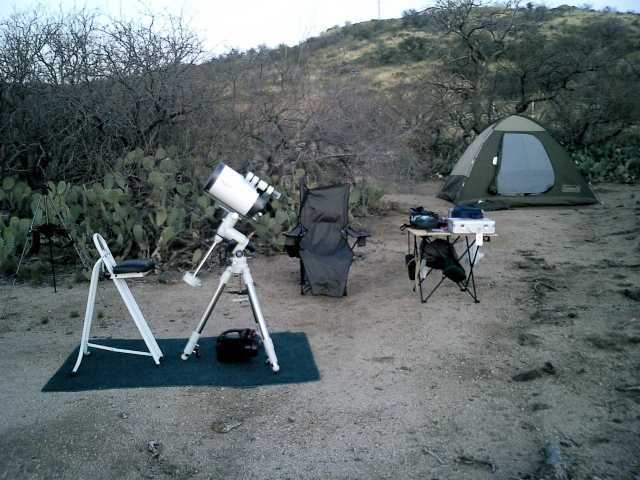
This Sunset photograph taken at 1836 MST shows how clear it was, good omen for the night. The temperature was 72°F.
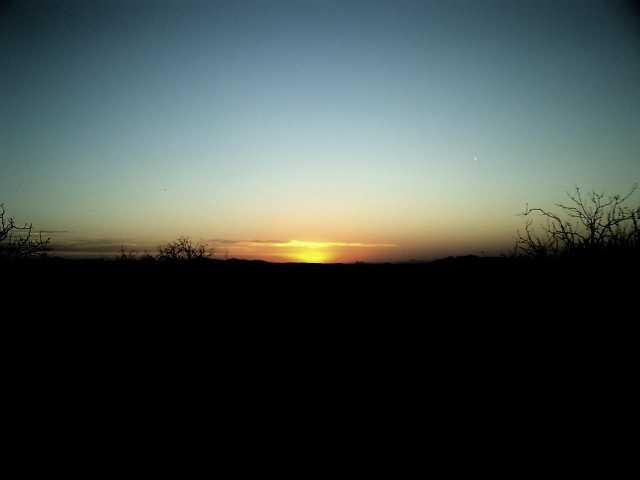
In last month's report I mentioned seeing the Zodiacal Light for the first time in my many decades of observing the night sky. It was evident again this trip. The image below is an unguided (hence the star trails) 5 minute exposure at ISO 1250 taken with my Nikon D70 DSLR.
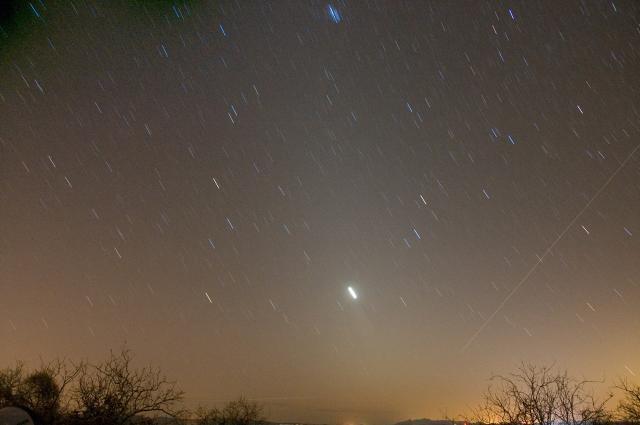
The planet Venus is the bright object in the bottom central portion of the photo and the light trail of a passing airliner is on the right. The Zodiacal Light is visible as a narrow faint bluish triangularly shaped area above and below Venus and just to its left and right. The area extends from the bottom (lost in the car lights on Oracle Highway) to almost the top of the photograph. Can you see it? If you need a hint, mouse over the image.
This trip was my second use of a Meade #777 Off-Axis Guider with my LXD75-8"SC and Nikon D70 DSLR. I am still finding achieving a precise focus a challenge. I plan to hopefully resolve that by focusing both the camera and the reticle eyepiece using the Moon later this month. But in the meantime I offer these selected images from the many that I took during the night.
M1 - The Crab Nebula - 5 minute exposure, ISO 1250, Noise Reduction ON, cropped from original Raw image. Some trailing is evident as there was a slight breeze affecting the telescope during guiding.

M51 - The Whirlpool Galaxy - 10 minute exposure, ISO 1250, Noise Reduction ON, cropped from original Raw image. Focus is slightly off.

M101 - The Pinwheel Galaxy - 10 minute exposure, ISO 1250, Noise Reduction ON, cropped from original Raw image.

After hunching over the guiding eyepiece for about 3 hours I decided to take a break and stretch out back in the "Astronomer's Quarters" (my tent). So at 2325 MST, with an air temperature of 66°F, and with the sky still clear but breezy, I stopped my astrophotography session.
At 0030 MST on 17 March I departed the Astronomer's Quarters. The temperature was 67°F under clear skies. The breezes were constant now.
M13 - The Great Globular Cluster in Hercules - 1 minute exposure, ISO 1250, Noise Reduction ON, cropped from original Raw image. Stronger breezes were making it difficult to guide.
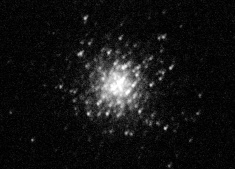
M57 - The Ring Nebula - 2 minute exposure, ISO 1250, Noise Reduction ON, cropped from original Raw image. Focus is slightly off.
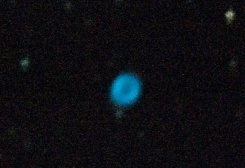
At 0250 MST I decided to give up as the breezes were making it impossible to do good guiding on objects. It was still clear, temperature 64°F. But overall I was pleased with the night. I just need to resolve the Off-Axis Guider focus difficulty. I planned that Saturday night would be devoted to just visual observing.
At 0850 MST, the temperature was already up to 78°F. The sky was clear but the breezes remained strong. By 1200 MST it was 87°F and there were some clouds coming in from the Southwest. The breezes were still strong. At 1300 MST it was 91°F and the clouds now covered the south half of the sky, with thicker clouds to the Southwest. I called home to check on the Clear Sky Clock forecast and it was not good. I began to pack up.
By 1500 MST I was ready to leave. The temperature was 90°F and it was mostly cloudy:
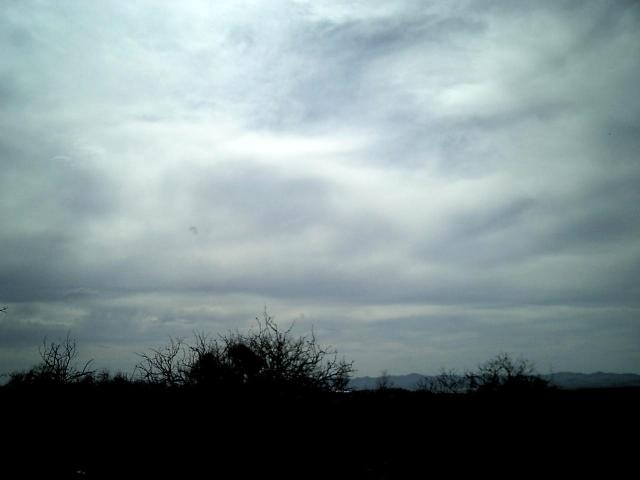
Until next time.